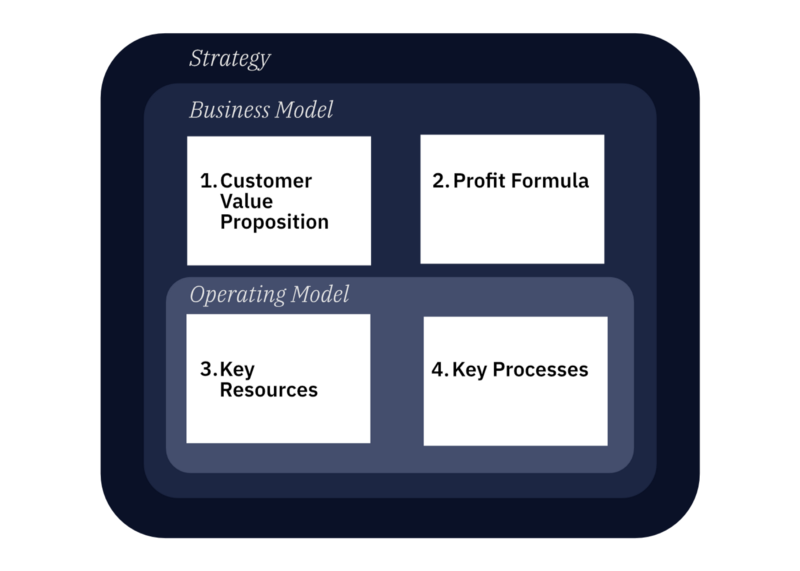
As a management consultant I’m often faced with the task of convincing a client to think in a more strategic way about their business. Often it’s not that they do not want to think in this way, it’s just that the terminology used when describing how a business works is confusing and therefore an off-putting exercise.
I believe the three most important terms in business: ‘Strategy’, ‘Business Model’ and ‘Operating Model’ all seem to merge into one vague term which means something completely different from one person to the next.This is dangerous. It’s dangerous because the clients I work with are the leaders of their businesses, and as leaders they need to be crystal clear in how they explain how their business is going to succeed in their chosen field, market, geographical region etc. Without clarity, there is no shared understanding of what the winning aspirations of the business is, where it is going to operate, how its offer is unique, how it’s going to win and what internal capabilities it requires to win. As such, people work toward their own vision of the future, which can sometimes be at odds with what management had in mind.
After much reading and internal reflection based on my own experiences, I attempt to explain what these terms actually mean and why they are distinct from one and other.
The Definitions
Strategy: outlines the set of choices which make your business value offer and internal operations unique to the competition. A strategy addresses two fundamental questions: 1. Where are you going to play? 2. How are you going to win there? It doesn’t matter if the strategy is being written for a business that sells hair conditioner, provides a managed service platform or is an internal function to a much larger business. The questions remain valid and need to be addressed if a successful strategy is to be defined. I recommend reading “Playing to Win, How Strategy Really Works” by A.G Lafley (previous CEO of P&G) and Roger L. Martin for a real deep dive into strategy.
Business Model: outlines what the value delivered by your business is and how the business will arrange itself in order to achieve that in a commercially viable way. It has four key components:
-
Unique customer value proposition (CVP). What customer challenge are you addressing? What does the offer look like? What channels are you selling through?
-
Profit formula. How does the offer result in a profit for the business? What are the costs? Where does the revenue come from?
-
Key resources. What are the key assets needed for the offering? People, tools, facilities, licenses etc.
-
Key processes. What are the operational and managerial processes which deliver value? E.g. training for people, steps in a manufacturing process, financial forecasting, compliance to regulations, tracking of performance metrics.
I recommend reading HBR’s “Reinventing Your Business Model” by M.W Johnson, C.M Christensen and H. Kagerman for a really interesting explanation of how the likes of Apple, Hilti and P&G transformed entire industries by rethinking the 4 components of their business models.
Operating Model: describes the key resources and processes required for your business to deliver the promised value to customers. Essentially, an operating model is components 3) and 4) in the business model definition.

What are the key differences?
Whilst there is overlap between all three definitions, there are distinctions between all of them which are important to recognise as a manager:
-
A business model is not a strategy. A good strategy clearly articulates how your business is going to be different from your competition, in a way that is difficult for your competition to duplicate. For example, you may choose to offer a product/service to a very limited set of high value customers in a market segment in only one geographic region. A business model however does not directly consider the positioning of the business relative to the competition, rather, it describes the value that product/service is going to deliver to the customer, and how the business will go about delivering it whilst making a profit.
-
An operating model is not a business model. An operating model is an ‘inward facing’ description of the key resources and processes required for the business to deliver value to the customer. An operating model does not concern itself with how the business produces the product/service at a profit, or indeed describe how the product/service delivers unique value to the customer- these are ‘externally facing’ concepts that are covered off in a business model. An operating model is therefore simply a subset of a business model, but it is useful to separate the concepts because the types of activities and people required to create the two models can differ.
Defining such overlapping terminology is difficult because drawing the line is an exercise in personal judgement. The real value in defining these core concepts comes about when trying to establish a common understanding within your business. Once everybody is working off the same definitions, conversations suddenly become easier, and decisions made at the lowest level of the business are suddenly traceable all the way up to overarching strategy.
If you have an alternative view on anything in this article please get in touch. By considering alternative viewpoints on these essential concepts in business, we can hope to do a better job of articulating them in the future.